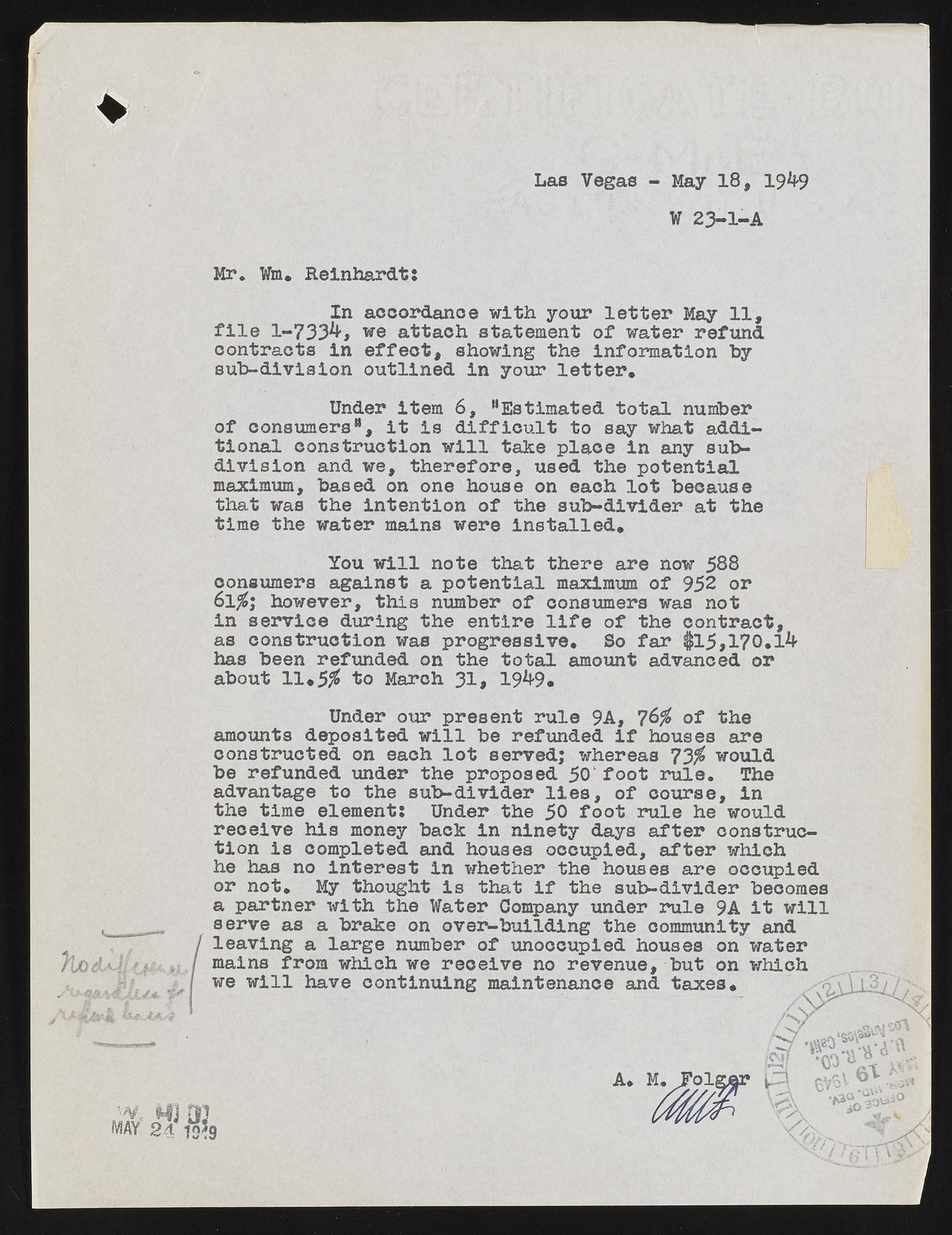Copyright & Fair-use Agreement
UNLV Special Collections provides copies of materials to facilitate private study, scholarship, or research. Material not in the public domain may be used according to fair use of copyrighted materials as defined by copyright law. Please cite us.
Please note that UNLV may not own the copyright to these materials and cannot provide permission to publish or distribute materials when UNLV is not the copyright holder. The user is solely responsible for determining the copyright status of materials and obtaining permission to use material from the copyright holder and for determining whether any permissions relating to any other rights are necessary for the intended use, and for obtaining all required permissions beyond that allowed by fair use.
Read more about our reproduction and use policy.
I agree.Information
Digital ID
Permalink
Details
More Info
Rights
Digital Provenance
Publisher
Transcription
Las Vegas - May 1 8 , 19^9 W 2 3 -1 -A Mr. Wm. Reinhardt: In accordance with your letter May 11, file l-733^> we attach statement of water refund contracts in effect, showing the information hy sub-division outlined in your letter. Under item 6 , "Estimated total number of consumers", it is difficult to say what additional construction will take place in any subdivision and we, therefore, used the potential maximum, based on one house on each lot because that was the Intention of the sub-divider at the time the water mains were installed. You will note that there are now 588 consumers against a potential maximum of 952 or 6l$; however, this number of consumers was not in service during the entire life of the contract, as construction was progressive. So far $15,170.1^ has been refunded on the total amount advanced or about 1 1 • to March 3 1, 19^9. Under our present rule 9A, 7 6 % of the amounts deposited will be refunded if houses are constructed on each lot served; whereas 73$ would be refunded under the proposed 50 foot rule. The advantage to the sub-divider lies, of course, in the time element: Under the 50 foot mile he would receive his money back in ninety days after construction is completed and houses occupied, after which he has no interest in whether the houses are occupied or not. My thought is that if the sub-divider becomes a partner with the Water Company under rule 9A it will serve as a brake on over-building the community and leaving a large number of unoccupied houses on water mains from which we receive no revenue, but on which we will have continuing maintenance and taxes*

